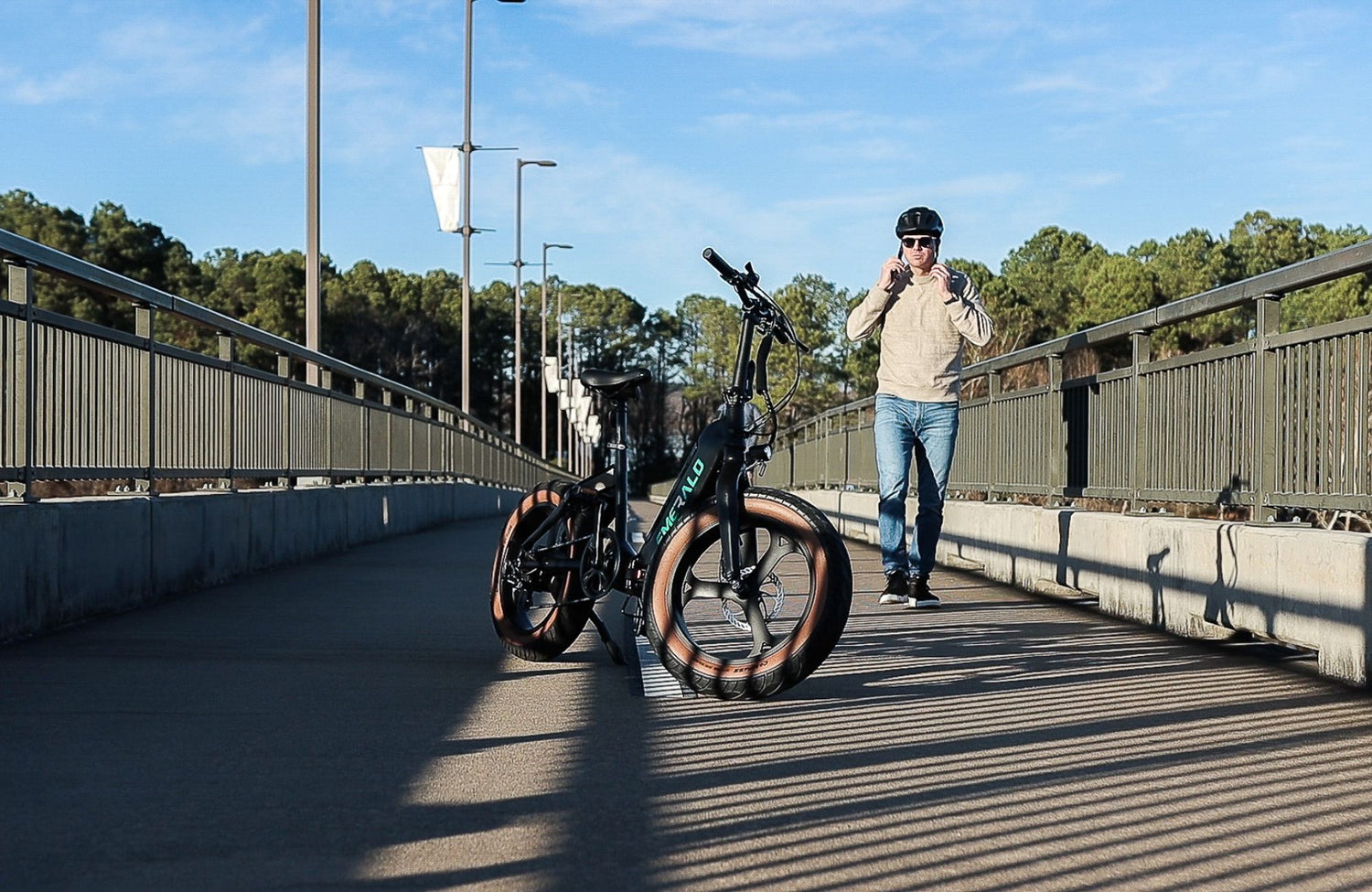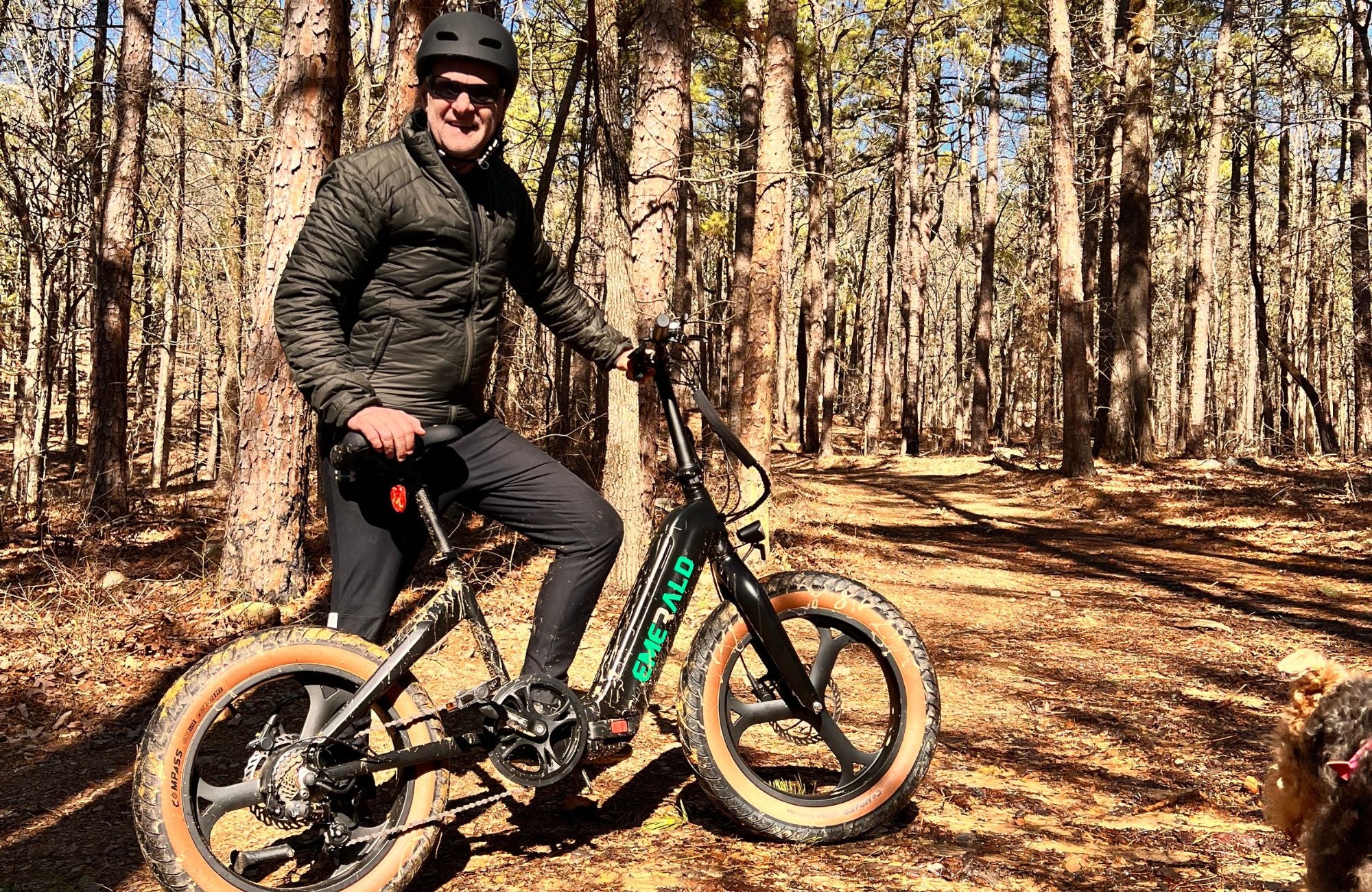Are you looking to make a positive change in the way you commute and reduce your carbon footprint? An electric bicycle (ebike) may be the answer. Ebikes provide an easy and efficient alternative to traditional cars—they’re much better for the environment, they save money on transportation costs, and you can get in some exercise on your way to work without over-exerting yourself. What’s not to love?
So how do you make the switch from car to ebike? There are a few steps to take in order to prepare yourself for the change. You may also have some other questions before taking the leap. Are they faster for commuting? How far can they travel? Can they go without pedaling? Keep reading to learn all that and more!
Steps You Can Take To Make A Smooth Transition
- Assess your commute distance: Start by assessing the distance of your commute. If it’s a short distance, such as 5-10 miles, an ebike may be a feasible option. However, if it’s longer, you may need to consider getting a more powerful ebike or looking for alternative transportation options.
- Choose the right ebike: Once you’ve determined that an ebike is a viable option for your commute, it’s time to choose the right one. Consider factors such as the motor power, battery life, weight, and comfort when selecting an ebike.
- Practice riding your ebike: Before you start using your ebike for your daily commute, take some time to practice riding it. Get comfortable with the controls, such as the throttle and pedal assist, and make sure you understand how to safely operate the ebike.
- Plan your route: Planning your route is important to ensure that you can safely and easily navigate your commute on your ebike. Consider factors such as traffic, bike lanes, and terrain when planning your route.
- Get the right gear: Safety is important when riding any type of bike, so be sure to get the right gear. This includes a helmet, reflective clothing, and lights for visibility.
- Give yourself time: It may take some time to adjust to your new commute on your ebike, so give yourself time to get used to it. Start by using your ebike for part of your commute and gradually increase the distance as you become more comfortable.
By following these easy steps, you can make a successful transition from a car to an ebike for your daily commute. Not only will you save money and reduce your environmental impact, but you’ll also enjoy the health benefits of cycling!

How Much Faster Is An Ebike For Commuting?
An ebike can be significantly faster for commuting than a regular bike, depending on the specific model and conditions. An ebike can travel at speeds of up to 20-28 mph (32-45 km/h) with pedal-assist, which can allow you to travel faster and cover more distance with less effort. This can be especially beneficial if you are commuting over longer distances or hilly terrain.
Compared to commuting by car, an ebike can be faster in certain situations, such as during heavy traffic or congested areas where cars can get stuck in traffic, while an ebike can maneuver through traffic more easily. Additionally, ebikes can access bike lanes, paths, and other shortcuts that cars cannot use, making it possible to take more direct routes and avoid traffic delays.
However, ebikes may not always be faster than cars in situations where the roads are clear and there are no traffic delays. The speed of an ebike will depend on various factors, including the power of the motor, the level of pedal-assist, the weight of the bike and rider, and the terrain and wind conditions.
Is 20 MPH On An Ebike Fast?
Yes, 20 mph on an ebike is considered a fast speed! It's important to note that in most countries, ebikes are legally limited to a maximum speed of 20 mph (32 km/h) with pedal-assist. Some ebikes may be capable of reaching higher speeds, but they would be considered illegal and unsafe on public roads.
An ebike can feel fast, especially if you're used to riding a regular bike, as it allows you to travel at higher speeds with less effort.
How Far Can I Commute On An Ebike?
Most ebikes can travel between 20 to 50 miles (32 to 80 km) on a single charge, while some high-end models can go up to 100 miles (160 km) or more on a single charge.
The range of an ebike can also be affected by other factors such as the level of pedal-assist you use, the speed you ride, and the terrain you're riding on. Riding in hilly terrain or into headwinds will require more battery power, reducing your overall range. Similarly, riding at higher speeds will consume more power than riding at lower speeds.
If you are considering commuting on an ebike, it's essential to choose an ebike with a battery capacity and motor power that suits your needs. It's also a good idea to plan your route and charging points in advance, especially if you have a long commute.
How Far Is Too Far To Commute By Ebike?
For most people, a daily commute of up to 20 miles (32 km) is manageable on an ebike, while some people can comfortably ride up to 30 miles (48 km) or more.
However, if you have a longer commute, you may need to consider additional factors such as charging points along your route or carrying a spare battery. It's also essential to consider the terrain and weather conditions along your route, as lots of hills or strong headwinds can significantly reduce your range and make your commute more challenging.
Ultimately, the distance that is too far to commute by ebike is a personal decision based on your individual circumstances. If you're not sure if your ebike is suitable for your commute, it's a good idea to test your route first to see how far you can comfortably ride and what charging options are available along the way.

How Long Does It Take To Ride 10 Miles On An Electric Bike?
Obviously, there are a multitude of factors that will affect how long it would take to ride 10 miles on an ebike. However, as a rough estimate, it would take around 30-45 minutes to ride 10 miles on an electric bike with an average speed of 15-20 mph (24-32 km/h).
If you're riding uphill or into headwinds, it may take longer, while riding downhill or with tailwinds could be faster. Additionally, the level of pedal-assist and how much effort you put in can also affect your riding speed and time.
Do Ebikes Run Without Pedaling?
Yes, some ebikes can run without pedaling, but it depends on the specific model and type of ebike. There are two main types of ebikes: throttle-based and pedal-assist.
- Throttle-based ebikes are equipped with a throttle that allows you to control the motor power without pedaling. You can activate the throttle by twisting a lever or pressing a button, which sends power to the motor and propels the ebike forward without pedaling. Throttle-based ebikes are similar to electric scooters or motorcycles and are primarily designed for recreational use or short trips.
- Pedal-assist ebikes, on the other hand, require pedaling to activate the motor. The motor provides assistance to your pedaling effort, making it easier to ride uphill or cover longer distances with less effort. The level of pedal-assist can be adjusted using a control panel, and some ebikes even allow you to turn off the pedal-assist and ride like a regular bike.
It's important to note that some countries and states have specific laws and regulations governing ebike use, including restrictions on throttle-based ebikes. It's essential to check the regulations in your area and choose an ebike that complies with the local laws and regulations.
Do Ebikes Recharge By Pedaling?
No, ebikes do not recharge by pedaling. Ebikes are equipped with a rechargeable battery that powers the motor and provides assistance to the rider's pedaling effort. The battery can be charged using a standard electrical outlet or charging station, typically taking 2-6 hours to fully charge depending on the battery capacity and charger output.
While there are some ebikes that have regenerative braking systems, they do not recharge the battery by pedaling. Regenerative braking systems allow the ebike to capture energy generated during braking and store it in the battery, extending the battery life and range of the ebike. However, regenerative braking systems only capture a small amount of energy, and it's not enough to fully recharge the battery.

Electric Cars Vs Electric Bikes
Electric cars and electric bikes are both eco-friendly transportation options that use electric motors to reduce or eliminate emissions. However, they have some differences that may make one option more suitable than the other depending on your specific circumstances.
Speed and Range
Electric cars are generally faster and have a longer range than electric bikes, making them a more practical option for longer commutes or trips. While ebikes have become increasingly popular as a practical and efficient mode of transportation, they still have a more limited range than electric cars, and are generally better suited for shorter commutes and recreational rides.
Cost
Electric cars are generally more expensive than electric bikes, with some models costing tens of thousands of dollars. Ebikes, on the other hand, are generally much more affordable, with some models costing less than $1,000. Additionally, ebikes are generally cheaper to operate and maintain than electric cars, with lower electricity costs, fewer parts to maintain or replace, and lower insurance costs.
Environmental Impact
Both electric cars and ebikes are environmentally friendly alternatives to gas-powered vehicles, producing no emissions and reducing our carbon footprint. However, electric cars generally have a larger environmental impact due to their larger size, heavier batteries, and manufacturing process. Ebikes have a smaller environmental impact, with smaller batteries and a more straightforward manufacturing process.








Leave a comment
This site is protected by reCAPTCHA and the Google Privacy Policy and Terms of Service apply.